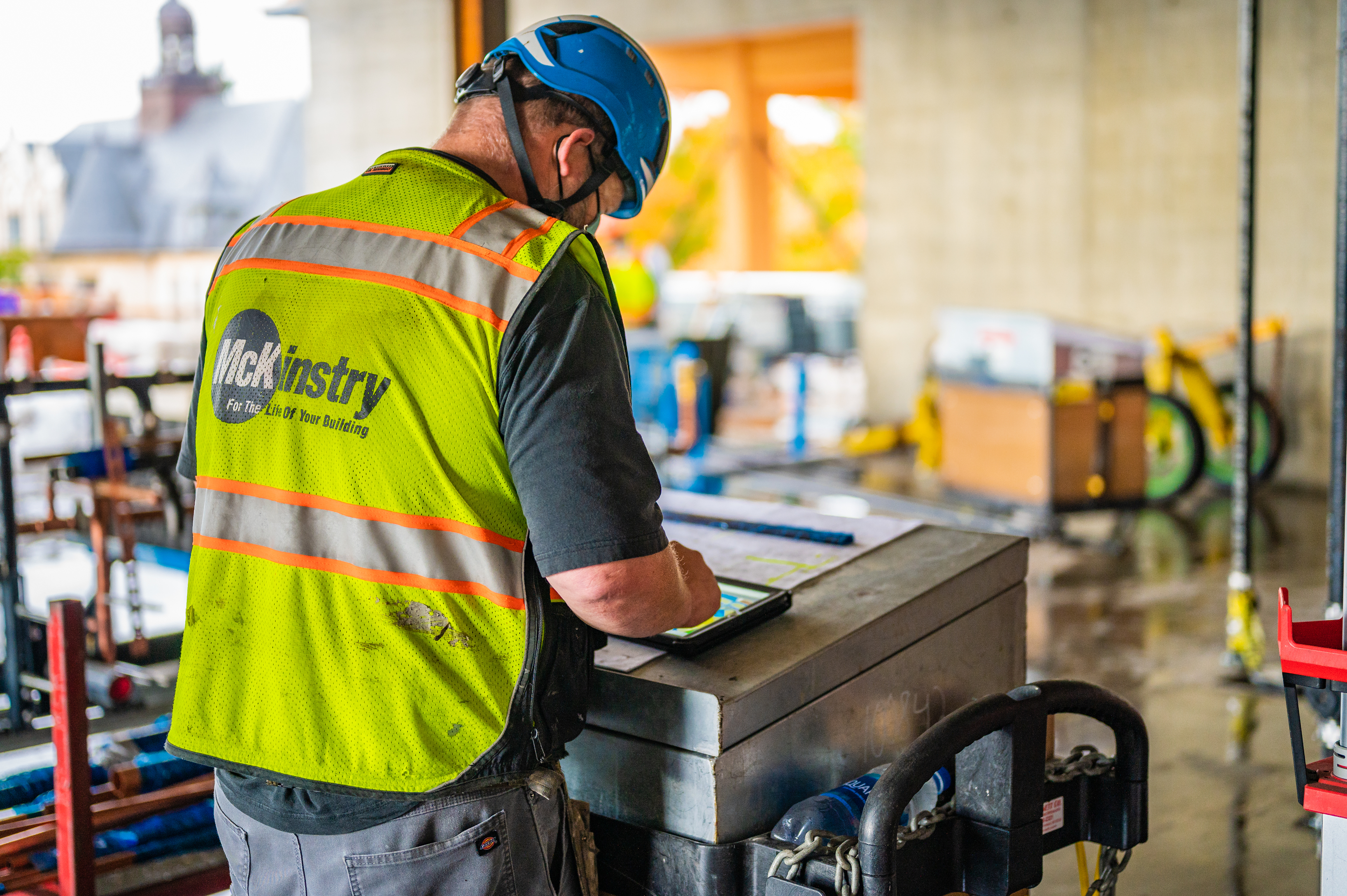Adopting an Iterative Approach to the Build Plan Process
Plan the work with the best information available so you get to a point where you can work the plan.

The conundrum is: Time is of the essence, and planning our work needs to happen quickly to get into a proactive stance on a large construction project. Yet, the preconstruction information available to us, at this moment in time, is often imperfect, missing or still being developed.
Therefore, we ought to plan in an iterative fashion to get going. We cannot wait for the best available information. We have to trust it is on its way and that we can make productive headway with what we have now.
At McKinstry, we’re currently embarking on a company-wide initiative to drive waste from the construction process. Adopting an iterative build plan approach is one small step we’re taking to achieve this goal. In fact, we’re in the process of training our employees around these concepts to clarify expected behaviors in order to offer more certainty and accountability on each of our projects.
There is a confluence of efforts and several stakeholders in the iterative build plan process, requiring preconstruction managers to navigate a thoughtful and effective workflow. I think organizing around these planning principles can be beneficial to design-build and plan-spec plumbing and piping contractors alike.
The four iterations to any build plan should be as follows:
1. Boulders: Deliver on the Promise
Once a project has been awarded, the first thing you need to know is, “What build strategies did we promise and sell to the customer?” This phase of the process is owned by the partnership of the project manager and field foreperson to bring the staff and craft leaders together. It’s at this time that you’ll participate in project award and sales to engineering kickoff meetings. This is where you’ll review the project specs, drawings, scope, budget and general contractor’s schedule.
While these are still just ideas or concepts, you’d better start developing the high-level build plan to deliver on that promise. Listen closely to other partners for input along the way, as you’ll ultimately be accountable for managing the processes that follow and performance against schedule and budget.
2. Big Rocks: Site Logistics will Dictate Prefab/Manufacturing Strategies
From here, you’ll start to participate in preconstruction meetings and partner with the craft leaders (foreperson). You’ll need to update the build plan based on site logistics at this stage in the process. I recommend visiting the site and doing a page turn to understand the logistics and context of the site.
How are you going to handle materials? How are you going to get into the site? What does vertical transportation look like? Is the project site located in a rural area or the middle of a city? Are there outriggers to land material on? What is the availability of the crane? The answers to these questions drive the manufacturing strategies that are available to you.
The team will need to settle on anticipated manufacturing strategies that will later inform and drive the design, detailing, and shop fab plan. The design will be communicated from the partnership to engineering at regular kickoff meetings and constructability reviews.
3. Crushed Gravel: Communicate Out to Inform and Align Upstream Partners
The team will continue to participate in preconstruction meetings for design development constructability review and inform the supply chain team of the build plan as it develops a supply chain strategy. You’ll need to start communicating these strategies to your engineering and detailing teams.
You’ve made certain promises, you’ve looked at the site logistics and context, and here are the strategies the team will use. You’ll then start to land on a shop fab plan, a design plan and a detailing plan. The shop plan and detailing plan, along with the strategies to deploy, will be communicated by the partnership at regular kickoff meetings.
At this stage, debate, test and challenge discussions are healthy, but ultimately the final call rests with the partnership. The expectation here is that detailing will fulfill the detailing plan accordingly. These discussions will culminate in an update to the build plan, once again based on those plans and the design development constructability review.
4. Sand: Communicate Build Plan to Master Schedule Author for Final Feedback
The last phase in the iterative build plan process comes after the construction documentation review meetings. You’ll now know exactly what you’ve promised to deliver, you know what the team can and can’t do, and you’ve communicated these strategies to the people who will enable them.
The last step is understanding the sequencing of work and how it will be completed inside the building. You need to put that plan together and show it to the general contractor because we’re not the only people working on the project site. No matter how carefully a project is planned, something may still go wrong with it. For example, if the curtainwall team plans to store their glass in the building, it will throw a wrench into your plans.
Before you get to the point where you’ve built it all, you need to communicate your plans to the rest of the trade partners — including the general contractor, who is controlling the jobsite. You’ll get one last loop of iterative feedback informed by the craft’s comprehensive task list, and then there’ll be one final trim before proceeding to execute the build plan.
There you have it. While the process sounds — and looks — complicated at first glance, I believe you’ll find it brings certainty and accountability to your projects. Think of it this way: An iterative build plan is planning the work so you can get to a point where you can work the plan.




